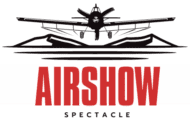The French Aerobatic Team: An Inside Look
In the world of aviation, few spectacles can match the awe-inspiring displays of aerobatic teams. Among the best, the French Aerobatic Team stands out. Known as the Patrouille de France, this team is a source of national pride and a symbol of precision flight.
History and Origins
The Patrouille de France was officially founded in 1953. However, its roots trace back to the 1930s. French military pilots experimented with group aerobatics at that time. This initiative was interrupted by World War II. Post-war, the resurgence of interest led to the formation of an official team. It aimed to represent French aviation excellence.
Initially, the team flew the Republic F-84 Thunderjet. Over the years, it transitioned through various aircraft models. These included the Dassault Mystère IV and Fouga Magister. Today, the Dassault/Dornier Alpha Jet serves as the team’s aircraft.
The Aircraft
The Alpha Jet is a light attack jet and advanced trainer. It was produced by a cooperation between France and Germany. It offers excellent maneuverability and reliability. The aircraft’s design makes it suited for intricate aerobatic maneuvers. Its twin-engine setup provides optimal thrust variability required for display activities.
Each aircraft in the team is equipped with smoke generators. These help to enhance the visual aspect of the routine. The colors used are those of the French flag: blue, white, and red.
The Pilots
Pilots of the Patrouille de France are among the most skilled. They are chosen from the ranks of the French Air and Space Force. A pilot must have extensive flying experience, typically over 1500 flying hours, before consideration.
The team consists of nine pilots, with two being reserves. Each pilot commits a dedicated period to the team, often three years. This allows for continuity and consistent training. The team’s leader, known as Leaders, is tasked with plotting the initial course of a flight display. This requires composure and precision in every maneuver.
Training and Discipline
The training schedule for the Patrouille de France is rigorous. It includes various stages building up to the display season. Winter months focus on flight safety and developing new routines. Training intensifies closer to airshow seasons. Daily flights ensure pilots refine skills and maintain perfect coordination.
Disciplined teamwork is essential. Precision flight demands clear communication and unwavering trust. Each pilot must anticipate the movements of the rest, operating as a cohesive unit.
The Display
Performances by the Patrouille de France are breathtaking. A standard routine includes a combination of group formations and solo stunts. The performance begins with figure formations. These are often named after geometric opportunities like the Victor or Diamond shapes.
The solo section showcases individual aerobatic skills. Successive rolls, loops, and synchronized movements create striking visual effects. The smoke trails provide a vivid backdrop against the sky.
Every display is a tightly orchestrated event. Precision timing is key. The Patrouille de France often performs at national holidays, international airshows, and special events worldwide. Their presence is considered a diplomatic gesture, signifying goodwill and cooperation.
Public Perception and Cultural Impact
The French Aerobatic Team is held in high esteem both domestically and internationally. In France, the team is a symbol of national unity and aerial excellence. It represents the ingenuity and skill of the French aviation industry.
The team’s performances inspire future generations of aviators. Their public displays often draw large crowds, and school children are commonly invited to witness the maneuvers, fostering a passion for aviation from a young age.
Contribution to Aviation
Beyond entertainment, the Patrouille de France contributes to the field of aviation. The team helps test and develop new flying techniques. Insights gained from aerobatic displays can lead to advancements in flight training and safety protocols.
Additionally, the technological exchanges between the aerobatic team and aviation manufacturers influence the design of new aircraft. Tests during training routines often translate into improved aircraft agility and performance.
International Collaborations
The Patrouille de France frequently collaborates with other elite aerobatic teams. Joint displays highlight shared values and camaraderies among different nations’ air forces. Some notable collaborations include shows with the USAF Thunderbirds and UK’s Red Arrows.
These partnerships strengthen international ties and promote a shared culture of aviation excellence. Exchanges between crews and pilots provide opportunities for mutual learning and skill enhancement.
Challenges and Future Perspectives
Operating an aerobatic team presents numerous challenges. Financial constraints, evolving aviation technology, and environmental considerations are pivotal. The Patrouille de France continually evolves to meet these demands.
Training and aircraft maintenance require substantial resources. The team relies on ample support from the French Air and Space Force and government. Furthermore, they face the challenge of adapting routines to incorporate new sustainability practices. Efforts are underway to minimize the environmental impact of performances.
Looking towards the future, the team strives to maintain its status as a leader in the aerobatics field. Emphasizing innovation in flight technology and training methods remains integral. Through ongoing adaptation, the Patrouille de France ensures its continued success and inspiration for upcoming aviators.
“`
